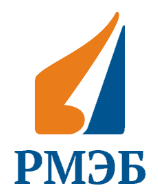"COMPUTER SIMULATION FOR THE FLOW OF HIGH-TEMPERATURE MELTS "
Keywords:
viscosity, potential, computer simulation, melt, the hydrodynamic equationsAbstract
One of the most constructive methods of studying physical properties of melts is computer simulation. This is explained by a large theoretical and applied value of the information obtained with respect to the transfer coefficients, in particular, bulk and shear viscosities. However, for specific calculations there is needed a detailed physical-and-mathematical apparatus. Objective - implementation methods of numerical solution of hydrodynamic equations involving correlation functions viscosity determined using quantum potentials study of the distribution profile of melt flow rate, to obtain the most simple regularization of the original system of hydrodynamic equations containing a physical sense. To implement such a program we will use methods of statistical physics. To the moment of the proposed studies, there were known the ways of solving equations of hydrodynamics for low-temperature liquids without taking into account bulk viscosity. In this paper there is proposed a mathematical model for the flow of high-temperature melts taking into account the nature of the short-range order in them and considering the second viscosity coefficient by the methods of statistical physics. Built distribution of melt flow rate based on the numerical experiments. An algorithm for the numerical integration of the hydrodynamic equations to predict the technological parameters of the filling metal melts.
References
"1 Regel A.R., Glazov V.M. Physical properties of electron melts. Moscow, 1980, 296 p. [in Russian]
Akhiezer A.I., Petleminsky S.V. Methods of statistical physics. Moscow, RFM Science, 1977, 368 p.
Kazhikenova S. Sh. Monitoring of Process Flow Diagrams in the Production of Ferrous Metals. Refractories and Industrial Ceramics. Springer Link, 2016. Vol.57, No. 4, pp. 360 – 363. http://link.springer.com/article/10.1007/s11148-016-9984-8
Maksimov Ye.V, Torgovets A.K. Mechanics of liquids, gases and friable medium. Almaty, RIC, 1997, 254 p. [in Russian]
Suleimenov T. Quantum chemical nature of short-range order in disordered systems. Thesis for the degree of Doctor of Chemistry. Karaganda, DGP HMI named after Zh. Abishev, 2004, pp. 191.
Yan X. Wei L, Lei Yao, Xin Xue, Yanbin Wang, Gang Zhao, Juntao Li, Qingyan Xu. Numerical Simulation of Meso-Micro Structure in Ni-Based Superalloy During Liquid Metal Cooling. Proceedings of the 4th World Congress on Integrated Computational Materials Engineering (ICME 2017). The Minerals, Metals & Materials Series. 2017, pp. 249-259 https://doi.org/10.1007/978-3-319-57864-4_23
Lobodyuk, V.A., Koval’, Y.N. &Pushin, V.G. Crystal-structural features of pretransition phenomena and thermoelastic martensitic transformations in alloys of nonferrous metals. The Physics of Metals Metallography. 2011, Vol.111, pp. 165 – 189. https://doi.org/10.1134/S0031918X11010212.
Shpilrain E.E., Fomin V.A., Skovorodko S.N., Sokol G.F. Studying viscosity of liquid metals. Moscow, Nauka, 1983, 244p. [in Russian]
Kazhikenova S.Sh., Shaltakov S.N., Issagulov A.Z. Physical and chemical aspects of theory of metallurgical processes. Monograph. Karaganda. KSTU Publisher, 2010, 257 p. [in Russian]
"













